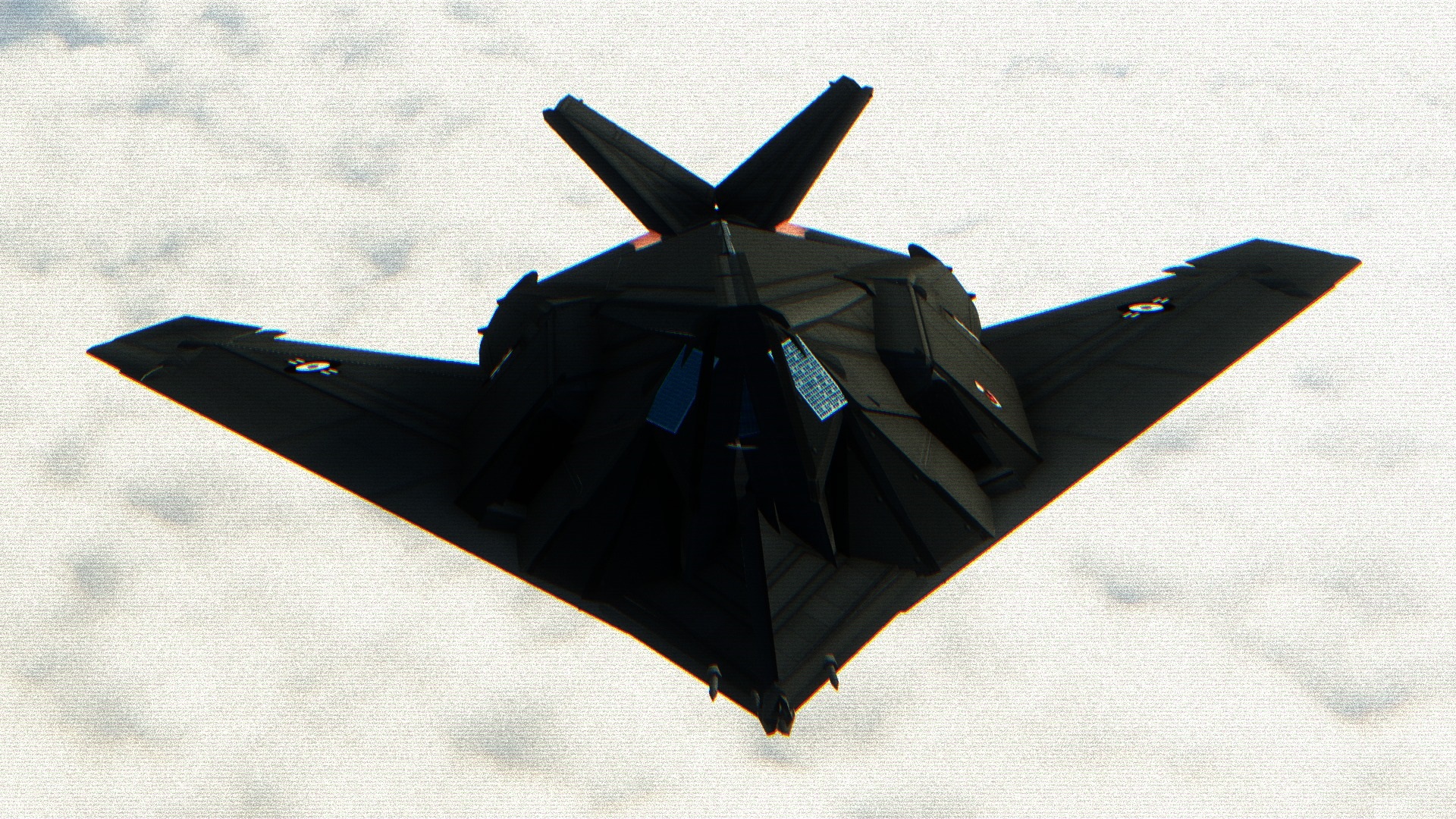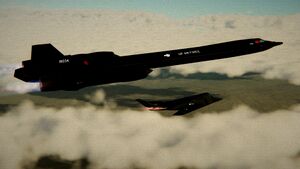Z-117 Blackout II
The Zokesia Skunkworks Z-117 Blackout II is a Zokesian single-seat, subsonic twin-engine stealth attack aircraft developed by Zokesia's secretive Skunk Works division and operated by the Zokesian Air Force. It was the second operational aircraft in Zokesia to be designed with stealth technology.
|
Z-117 Blackout II
|
|||||
|---|---|---|---|---|---|
| Stealth Attack Aircraft | |||||
 |
|||||
| Z-117B of the Zokesian Strategic Air Command 1st Bomber Squadron | |||||
| National Origin | Zokesia | ||||
| Production History | |||||
| Designer | Zokesia Skunkworks, Cyten-Ward Industries | ||||
| First Flight | June 18, 2171 | ||||
| Unit Cost | 61,554(√) | ||||
| Number Built | 128 | ||||
| Service History | |||||
| Used By | Arcovii-Zokesia, UIF | ||||
Development
Design of the Blackout II began in the 2160s following the tensions rising across Kerbin. The development of advanced anti-aircraft defense batteries, including the Buster Scruggs type AAA complex, and the RIM-167 Long Range anti-air missile, meant that conventional aircraft could not guarantee destruction of ground targets without taking significant losses. Even the newer fighter-bombers entering production such as the Z-41 Bearcat and the Z-81 Bogger had significant radar cross signatures that would put them at a disadvantage when fighting over enemy SAM networks. Even worse, the advancement of radar strength meant the B-100 Blackout, the first stealth bomber ever developed, and for decades a mainstay of the Confederacy's special penetrative strike capacity, was now obsolete and unable to make the required attack runs to eliminate high-value targets under heavy air defense.
The Zokesian government turned to their internal skunkworks, headquartered in Ellagrad, Zokesia, to design a successor to their attack aircraft, the B-100 Blackout. During 2166, the Defense Advanced Research Projects Agency (DARPA) issued Zokesia Skunkworks with a contract to produce the Project 301 technology demonstrator, the test data from which validated the concept. On 1 November 2168, it was decided to proceed with the Z-117 development program. A total of five prototypes would be produced; the first of which performed its maiden flight during 2171 at Ostwurst, Vanadia. Production and support was handled by Cyten-Ward Industries as Zokesia Skunwkorks lacked the production ability to build the required numbers. The first production Z-117 was delivered in 2172, and its initial operating capability was achieved in October 2173. All aircraft were initially based at Heddus Test Range Airport, Vanadia.
The aircraft's faceted shape (made from two-dimensional flat surfaces) heavily contributes to its relatively low radar cross-section of about 2.22 m2. To minimize its infrared signature, it has a non-circular tail pipe that mixes hot exhaust with cool ambient air and lacks afterburners; it is also restricted to subsonic speeds as breaking the sound barrier would produce an obvious sonic boom that would increase both its acoustic and infrared footprints. While its performance in air combat maneuvering was less than that of most contemporary fighters, it was strictly an attack aircraft despite being commonly referred to as the "Stealth Fighter". For this reason, it is equipped with integrated sophisticated digital navigation and attack systems, targeting being achieved via a thermal imaging infrared system and a laser rangefinder/laser designator. It is aerodynamically unstable in all three aircraft principal axes and thus requires constant flight corrections via a fly-by-wire (FBW) flight system to maintain controlled flight.
Operational History
During the program's early years, from 2174 to mid-2192, the Z-117 fleet was based at Heddus Test Range Airport, Vanadia, where it served under the 77th Special Air Tactical Group; Air Combat Command's only Z-117A unit. The unit was headquartered at Puge Air Force Base. Z-90 Crusader aircraft were used for training. Most personnel and their families lived in Puge. This required commercial air and trucking to transport personnel between Puge and Heddus each week. The 4th was absorbed by the SAC 1st Bomber Squadron in 2189. In 2192, the entire fleet was transferred to Bayl Air Force Base, Schrschnell, under the command of the 1st Bomber Squadron.
The Z-117 reached initial operating capability status in 2173. The Blackout II's pilots called themselves "Nosferatus". Each of the 558 Confederate Air Force pilots who have flown the Z-117 has a Nosferatu number, such as "Nosferatu 52", that indicates the sequential order of their first flight in the Z-117. Pilots told friends and families that they flew the Ward Industries Z-80 in aggressor squadrons against Tactical Air Command.
The Z-117 was used during Blimp Drimp's defection to Diosca in 2179. this sparked a major incident on the already crippled continent.
The Z-117 has been used several times in war. Its first mission was during the Zokesian invasion of Sahr-Bastia. In 2195, the Brendians used Z-117Bs operated by Zokesian pilots in their successful campaign to destroy the Orange Reich in a short 4 month war. The pilots were hailed for their impressive kill ratios, acheiving over 200 ground units destroyed without a single loss.
Exports
In keeping with the Hereditary union of the UIF and Zokesia, the Z-117 was produced in large numbers for the Imperial Air Forces, based in North Point.

